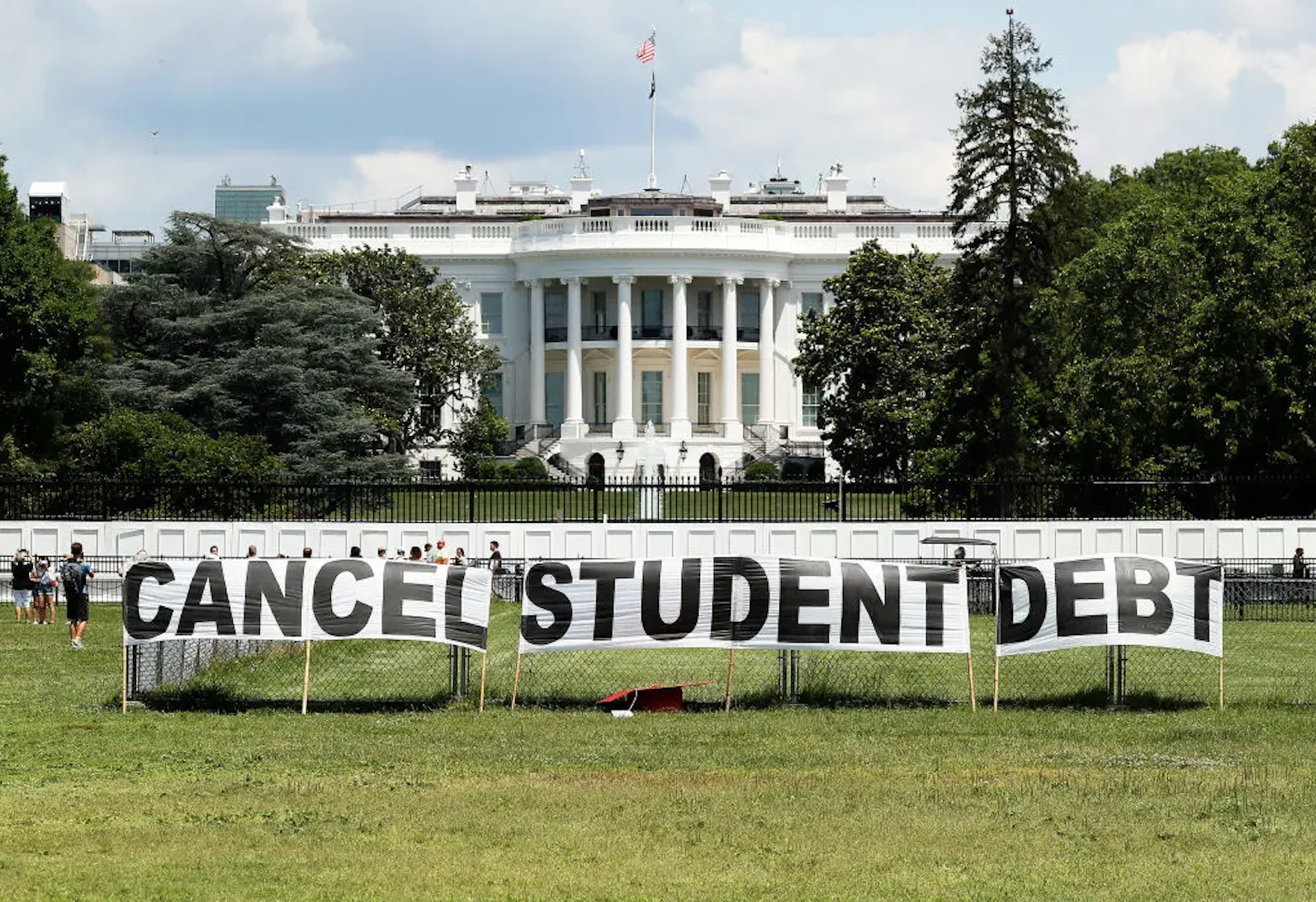After a year in office, President Joe Biden has yet to follow through on his campaign promise to relieve the student debt crisis. Forty-three million American borrowers are awaiting changes to their collective $1.5 trillion worth of student debt. This group includes people in the process of repaying their loans as well as students who are not currently making any payments, either because they defaulted on their loans or are still enrolled in school. As of 2015, a record 70 percent of all bachelor’s degree recipients borrowed money to pay for college. Upon graduation, these students owe an average of $29,400. In fact, according to a new report from the Bipartisan Policy Center, student loans have increased 144 percent since 2007. Given today’s economic circumstances, Biden and the Department of Education must make immediate policy changes to prioritize the debt crisis and provide some relief to these borrowers.
A closer historical look at the government’s role in student debt accumulation helps frame the issue in its modern day context. During the Cold War, the fear that the United States was falling behind in educational attainment, coupled with the global technological race, encouraged Congress to pass the National Defense Education Act in 1958. This law enabled access to scholarships and loans for college students. This legislation was followed by the Higher Education Act of 1965, which dictated that grants be given based on income, greatly expanding the ability of students to obtain a college degree. Low tuition costs and high enrollment rates in turn likely strengthened the US economy as graduates earned more and were able to spend that money after college. But education policy took a sharp turn when states passed tax and expenditure limitations during the Reagan administration. After the Great Recession of 2008, deeper cuts were made to higher education funding, particularly for public universities at the state level. The student debt crisis gained attention after the recession when graduates invariably fell behind on their loans.
Fast forward to 2021: During Biden’s campaign, he made specific promises to cancel student debt and reform key student loan programs. The most memorable of these was a promise to cancel $10,000 of debt per borrower. To his credit, Biden has canceled student debt for certain groups of borrowers, such as those defrauded by for-profit schools. One of his first actions in office was the extension of the pandemic-era pause on student loan payments, and he has extended it twice since then. However, August 31st, when payments are set to resume, is fast approaching.
But why should Biden begin making efforts to relieve the student debt crisis? For one, low affordability of college degrees in an economy that places a premium on education presents a worrisome economic dilemma. Rising tuition prices in public schools demonstrate that state governments are subsidizing public education less, which in turn means that students must pay a greater share of the costs. Private schools also have been raising their tuition prices. In a recent report, the College Board estimated that students paid $17,410 to attend a private college and $7,900 to attend a public college during the 1980–1981 school year. In the 2021–2022 year, students paid $38,185 on average for private college, $22,698 for public college out-of- state, and $10,388 for public college in-state.
Additionally, economists and policymakers are concerned that student debt is an obstacle to economic recovery. Borrowers are less likely to buy cars or houses, have less disposable income for consumer spending, and their credit scores are worse. Therefore, relieving student debt would constitute a long-term investment in the US economy.
Biden should feel a political compulsion to relieve student debt. Sixty-five percent of voters between the ages of 18 and 24 voted for Biden, which is 11 percent more than any other age group. These votes were especially powerful in swing states that Biden won, such as Georgia and Pennsylvania. Simon Rosenberg, president of the New Policy Institute, notes that “53 percent to 55 percent of registered 18- to 29-year-olds appear to have voted. That may be the highest ever recorded in the modern era of politics.” Many of these voters have a personal stake in the results of Biden’s reforms to student debt, and they deserve the fulfillment of these promises.
Another reason Biden should feel personally responsible for providing solutions to the student debt crisis is his 2005 vote as a US Senator to strip students of some bankruptcy protections. The Republican-led Bankruptcy Abuse Prevention and Consumer Protection Act made it more difficult for student borrowers to discharge their debt. In the decade following the law’s passage, cumulative student loan debt tripled. Joe Biden was one of 18 Democratic Senators that voted for the bill. This may be related to the hundreds of thousands of dollars he has received from credit companies in campaign contributions over his political career. Such a past decision casts doubt on whether the president truly prioritizes this issue.
What are some of the reasons Biden has not yet instituted any change? As of April 2021, the president requested the Department of Education to furnish a memo concerning his authority to cancel student debt, but the administration has yet to share the status of this memo. Beyond this, it’s important to remember that the government, as the sole distributor of student loans, stands to profit off of the loans. It is projected by the Government Accountability Office that the US government will make $66 billion from loans between 2007 and 2012.
Biden’s temporary delays of loan due dates have indeed relieved the burdens of student borrowers for the time being. But with 30 percent of the $1.2 trillion in student loans in deferment, forbearance, or default, the Biden administration must develop a strategy soon to come to the aid of student borrowers. Millions of Americans anxiously await their verdict on this urgent issue. Biden can’t keep extending the student loan pause forever.
